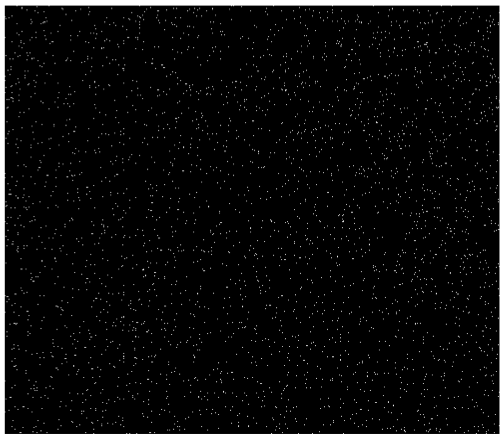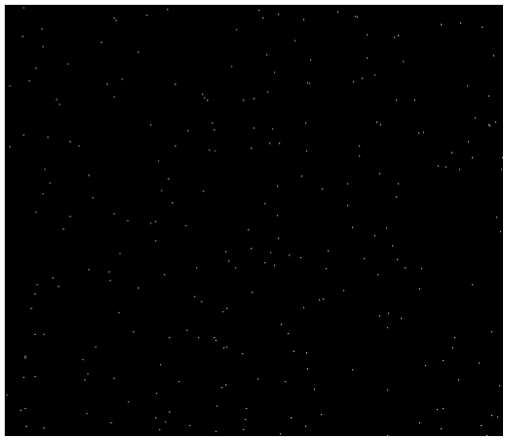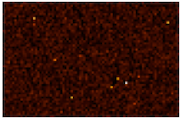EMCCD Specs

Editorial preface: Labrigger takes submissions from anyone. We post them if they’re potentially useful. In this case, we received some material from a commercial source. Labrigger is not endorsing their products. But we recognize that the people who are trying to sell cutting edge technology know a lot about it, and have some expertise to share. In this spirit, in the past Labrigger has suggested using catalogs as textbooks. This post is in the same vein.
Low light imaging with EMCCDs: what you should look for in technical specs
Written by Félicien Legrand and Sam Osseiran, Application scientists with Nüvü Cameras Inc
Compared to other low light imaging technologies, EMCCDs have the upper hand on several key detection parameters. They combine the high quantum efficiency (QE) and low dark current of traditional CCDs to the low readout noise of ICCDs to provide the best sensitivity in low light detection. However, in the harshest of lighting conditions, EMCCD performance becomes limited by a noise source referred to as clock-induced charges (CIC), which can contaminate images up to 200 times more than dark current in photon counting applications. Combine this with the excess noise factor (ENF), a coefficient related to the random nature of electron multiplication that effectively reduces signal-to-noise ratio (SNR), and you’ve quickly become limited in your photon counting abilities.
The good news in all this? Modern developments in EMCCD technology have allowed an appreciable reduction in all of the above noise sources including methods to eliminate the ENF and dropping CIC, leading to a great SNR – even in the darkest imaging conditions. Aside from the shot noise which is inherent to the nature of light itself, these modern commercial devices are getting closer and closer to what may be the perfect imaging device.
So what are the noise sources that should concern the modern-day EMCCD user and how are they reduced? More importantly, what are the camera specs that users should be familiar with prior to purchase?

Readout noise: the reason for electron multiplication
All CCD detectors convert information from electronic charges stored in the detector pixels to a voltage signal that can be interpreted by the computer to produce an image. Unfortunately, even the highest quality analog-to-digital converters (ADCs) used in these processes are not perfect and their counting skills are limited to, give or take, a precision of several electrons (or a few tens of electrons, depending on the ADC). This is far from being a limitation in everyday photography, where tens of thousands of photons can be converted into electrons on a traditional CCD chip. In low-light conditions however, where you’re dealing with a few dozens of photons per pixel, the readout noise becomes quite visible and the resulting SNR easily drops below 10 dB. Good luck publishing those images!
The solution to this issue is really quite simple in hindsight: what if we were to multiply the electronic signal in each pixel on the chip itself prior to readout? If every electron were to be multiplied a few thousand times before the readout sequence downstream, the ADC would still be limited by its precision of a few tens of electrons, but this uncertainty would now be negligible in contrast with the amplified electronic signal. Lets take an oversimplified example in which no other noise sources are considered to better understand the concept at hand.
Suppose we’re interested in a single pixel that only produced 10 electrons worth of useful signal during its exposure time. Let’s also suppose that when reading this particular pixel, the ADC added 10 electrons worth of noise. The SNR is thus 1 or, equivalently, 0 dB.
Restarting the same thought experiment with electron multiplication, let’s suppose the EM process multiplies each electron exactly one thousand times. We now have 10 000 electrons in our pixel after multiplication and, with the same amount of noise as before, we’re left with an SNR of 1000, or 30 dB. Great!
In sum, what should end-users look for in readout noise reduction? Check out the maximum EM gain of the EMCCD camera you’re considering. The higher the EM gain, the lower the effective readout noise.
Dark current: why your detector should be colder than your ex’s heart
Whether we’re talking about a CCD, an EMCCD, an sCMOS or even a simple photomultiplier, all detectors are susceptible to dark current (a.k.a. thermal noise). This source of background signal results from the fact that the atoms that make up your detector have a nonzero thermal energy. As a result, this energy can occasionally contribute to the ejection of an electron from the silicon substrate into a pixel, which then becomes indistinguishable from a genuine photoelectron. This effect is one of the main reasons why you will never have an image that is completely black, even with the shutter closed.
The solution to this issue is rather simple and intuitively involves cooling the detector. The optimal operating temperature may vary from one camera to the next, but is generally somewhere between -80°C and -90°C. Above that range, you’re still susceptible to significant levels of dark current. Anywhere below -90°C, you begin to hinder the transfer of electrons from one well to the next, which can result in pixel crosstalk.
So what should you keep in mind regarding dark current? First, it is a time-dependent noise source. The longer your exposure time, the more electrons will have accumulated in your detector’s pixels. As such, it is quantified in terms of electrons per pixel per second. For example, let’s suppose some supplier gave you a value of 0.001 electron/pixel/s for a 512 X 512 camera model. Multiplying the total number of pixels by the dark current value yields 512 x 512 x 0.001 = 262. In practical terms, this means that for 1 second of exposure time for this particular detector, you can expect around 262 electrons scattered throughout your image that result purely from dark current.
(For the images below, hover your mouse cursor to read the caption)


One final note on the topic: dark current is directly related to the mode of operation of your camera. EMCCDs can operate either in the inverted mode operation (IMO) or in non-inverted mode operation (NIMO). The choice of mode has a strong impact on the contribution of both the dark current and CIC levels to your total background signal. As such, it is absolutely critical (and this fact can not be stressed enough) for users to inquire whether the dark current and CIC values provided by manufacturers are obtained in IMO or NIMO. More details on these two modes of operation are provided in a further section.
Excess noise factor: accounting for the randomness of electron multiplication
We’ve learned so far that electron multiplication (EM) is the process that makes EMCCD cameras shine brightest amongst low-light detectors. However, what hasn’t been mentioned in detail yet is the stochastic nature of this process. In fact, EM is achieved through the use of extremely high voltages once the electrons have entered the EM register after having left the detector’s pixels. Thus, the electrons from a given pixel will ultimately enter the EM register and travel from one register element to the next via high voltage clocks. The trick here is that a given electron may knock another electron that was originally part of the silicon substrate and drag it into the next EM register element upon transfer. The catch is that this process, referred to as impact ionization, has a relatively low probability of occurring – something along the lines of 2%, depending on the selected value of the EM gain. However, by arranging a long sequence of EM register elements – 500 for example – you end up with (1.02)500 = 19 957 electrons… from a single initial charge!
Of course, there is a trade-off to this signal amplification. As was previously mentioned, this effect is stochastic and is governed by a well-modelled probability distribution function that depends on the number of input electrons and the mean EM gain. This randomness is taken into account when computing the system’s SNR and is represented by a single dimensionless number: the excess noise factor, or ENF for short. With null EM gain, the ENF is simply 1, but asymptotically approaches the square root of 2 (approximately 1.414) as EM gain increases. Mathematically speaking, the ENF appears in the denominator of the SNR calculation and is squared. Its presence has the same effect on the SNR as cutting the QE in half in the absence of ENF… An effect most certainly not to be neglected!
How have manufacturers come to solve this one? Simply by the implementation of a binary mode of acquisition. By integrating an algorithm that analyzes the image on a pixel-by-pixel basis using a mathematically relevant threshold, it is possible to statistically determine whether a given pixel did in fact originally contain a genuine photoelectron or not. Of course, this method must only be used in the most extreme low-light conditions, where you expect 1 photon per pixel per exposure, or less – i.e. true photon counting. In this case, the generated images are binary due to the thresholding involved. In this manner, the stochastic nature of the EM process is no longer relevant to the SNR calculations and the ENF is thus completely suppressed. The trade-off here is that the dynamic range of the generated images is much more limited, but even this issue can be remedied simply by summing several frames together.
What should you look for in technical specs as an end-user? Check to see whether your manufacturer offers photon counting algorithms that use thresholding to remove the ENF. However, keep in mind that the threshold will be applied to noisy pixels as well! As such, it is in your best interest to make sure the noise floor is as low as possible to allow a strong contrast between signal and noise.
One last note. Photon counting algorithms are very efficient to remove the ENF without altering the number of genuine photoelectrons in each pixel. It must not be confused with noise-filtering algorithms that sometimes are used to cut off noises like dark current or CIC, which presents the risk of removing genuine photoelectrons. Once again, you must look for the system that simply generates the lowest level of noise and offers a dedicated photon counting mode for ultra low-light applications.

Clock-induced charge: the EMCCD’s worst enemy
This form of noise results from the voltage signals used to convey electrons from one pixel to the next during the charge transfer process. This noise source also exists in standard CCDs, but it is so negligible in comparison with other sources such as readout noise and dark current that it is never even considered. In the case of EMCCDs however, all other major noise sources are reduced to the point where the CIC becomes dominant in extreme low light applications. In contrast with dark current, CIC depends on the readout rate as opposed to the exposure time and is thus expressed in terms of electrons per pixel per frame. Until recently, most EMCCD cameras with a 512 x 512 detector peaked at 10 MHz, but some modern cameras can reach up to 20 MHz or even more. However, don’t be too quick to jump on these products strictly in favour of higher frame rates! Be sure to look into the noise values at these high acquisition speeds. Given that your images are produced at a substantially higher rate, the exposure time is inevitably reduced. This implies that your detector receives much less signal for each frame and, given the higher CIC levels at these readout rates, your SNR is significantly affected by the decrease in signal combined with the increase in noise.

As was the case for dark current, CIC is also affected by the camera’s mode of operation: it is higher in the case of IMO and lower in NIMO. More details on this CIC/dark current trade-off are provided below.
IMO or NIMO: Modes of operation that strongly determine overall noise
The inverted mode of operation (IMO) consists in applying a voltage across the CCD sensor in order to generate a population of “holes” within the silicon substrate, allowing them to recombine with the electrons resulting from dark current prior to readout. As a result, IMO significantly contributes to decreasing the dark current. However, the trade-off is that the moving holes generate CIC during the vertical transfer of the electrons towards the readout register. That’s why on one hand, the IMO appears appropriate for long exposure times while on the other, NIMO is ideal for short periods of acquisition when the dark current has little time to accumulate. Of course, this is all true except in the case where the high voltage signals delivered by your EMCCD controller are sufficiently fine-tuneable to limit the excess CIC resulting from IMO… Such a controller would therefore lead to a much greater SNR compared to what is obtained with NIMO, no matter the integration time!
In sum, the take-home message here is to ask manufacturers about the mode of operation they use for measuring CIC and dark current in their product specifications. Remember that IMO and NIMO are mutually exclusive modes of operation and it is thus impossible to get the best of both worlds!
Charge transfer efficiency: A determining factor in image clarity and consistency
Last but not least, it is important to inquire whether the detector’s efficiency in terms of electron transfer in the horizontal register has been characterized by your manufacturer. It has a direct impact on the clearness of your images, especially when high EM gain values are used. A high charge transfer efficiency also helps to prevent image deformation due to pixel leaking.
It is known that most high-end EMCCD manufacturers integrate high performance sensors from third parties, like e2v Technologies, but design and build their own packaging, controllers, software interface and customizable options. As such, some of them may refer to the CCD manufacturer’s data sheet to provide you with the charge transfer efficiency specification. However, because it also depends on external factors aside from the sensor itself, much more reliable specifications in terms of charge transfer efficiency come from EMCCD providers who characterize their systems in their entirety.


Conclusion
EMCCD companies must take all these noise sources and considerations into account when designing their cameras. They must reduce all noise sources from CIC to dark current including ENF, while maximizing CTE to offer true photon counting imaging capabilities. A new player, Nüvü Cameras, founded a few years back in 2010 propose an extremely low EMCCD background noise. Currently designing and building in Canada liquid nitrogen cooled cameras, Nüvü will release a new line of products in February 2013. Called HNü, these new cameras will combine the very low background noise in addition to a compact size and an efficient thermoelectric cooling system. Perhaps acceptable in fields of research like astronomy, the liquid nitrogen cooling is undoubtedly unwanted for most biomedical research imaging applications, where the ease of use and integration is as much important as the level of performances among researchers expectations.
[…] Labrigger.com, la source de solutions ouvertes pour la recherche biomédicale, dont le but est d’accélérer la recherche en réduisant les doublons de travail des laboratoires, consacre sa dernière publication aux caméras EMCCD. Labrigger donne la parole aux experts de Nüvü Cam?ras qui présentent une revue exhaustive des bruits électroniques et des contraintes impliquées dans l’imagerie à faible flux avec une caméra EMCCD. Voir l’analyse complète ici! […]